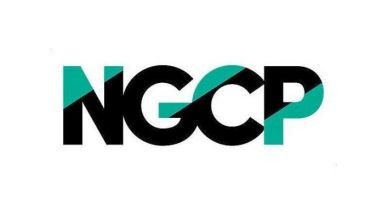Wake-up call sounded for garment industry
November 16, 2003 | 12:00am
A wake-up call has been sounded over the fate of the country’s garment industry in the advent of a quota-free world economy.
In a speech before the recent 2nd MAP CEO International Conference held at the Makati Shangrila Hotel, Bernardine Siy, chairman of Fil-Pacific Apparel Inc. (Fil-PAC), said that "while we are preoccupied with a seemingly endless stream of crises, a far greater crisis has been apparently side swept from the national consciousness."
Siy referred to the expiration of World Trade Organization-initiated Agreement on Textile and Clothing (ATC) on Jan. 1, 2005.
This development, Siy stressed, may lead to the demise of the productive dollar-earning garment industry which for 30 years has not only significantly helped our economy but also provided steady employment to over 400,000 workers, and livelihood to their families.
The industry ranks no. 2 in Philippine export earnings of $35-billion annually, It has been steadily earning $3 billion annually and contributing eight percent to the country’s total export dollar revenues annually.
Siy made an appeal for the industry and government to close ranks and immediately find solutions to the problem.
"Government should convene a knowledgeable ad hoc multi-sectoral body and, among other measures, initiate an RP-US free trade agreement to ensure growth and continued market access for exports," she proposed.
On the part of the industry, Siy said the development should not be viewed as a doomsday scenario but as an upbeat challenge for more staggering growth.
The Fil-PAC executive noted that while the industry has only a few good cards in its favor, "these cards, if played right, can be a good platform to transform the industry into a winner in the new environment."
Among these cards, she said, are the industry’s 1,000 companies and owners with solid expertise and experience in the business, almost half-a-million highly skilled workers, long-standing relationship with customers and suppliers worldwide and an efficient work infrastructure and well-oiled business processes.
Equally important, she added, is the immediate need for the industry to seek out new lucrative foreign markets and bolster local garment production.
In a speech before the recent 2nd MAP CEO International Conference held at the Makati Shangrila Hotel, Bernardine Siy, chairman of Fil-Pacific Apparel Inc. (Fil-PAC), said that "while we are preoccupied with a seemingly endless stream of crises, a far greater crisis has been apparently side swept from the national consciousness."
Siy referred to the expiration of World Trade Organization-initiated Agreement on Textile and Clothing (ATC) on Jan. 1, 2005.
This development, Siy stressed, may lead to the demise of the productive dollar-earning garment industry which for 30 years has not only significantly helped our economy but also provided steady employment to over 400,000 workers, and livelihood to their families.
The industry ranks no. 2 in Philippine export earnings of $35-billion annually, It has been steadily earning $3 billion annually and contributing eight percent to the country’s total export dollar revenues annually.
Siy made an appeal for the industry and government to close ranks and immediately find solutions to the problem.
"Government should convene a knowledgeable ad hoc multi-sectoral body and, among other measures, initiate an RP-US free trade agreement to ensure growth and continued market access for exports," she proposed.
On the part of the industry, Siy said the development should not be viewed as a doomsday scenario but as an upbeat challenge for more staggering growth.
The Fil-PAC executive noted that while the industry has only a few good cards in its favor, "these cards, if played right, can be a good platform to transform the industry into a winner in the new environment."
Among these cards, she said, are the industry’s 1,000 companies and owners with solid expertise and experience in the business, almost half-a-million highly skilled workers, long-standing relationship with customers and suppliers worldwide and an efficient work infrastructure and well-oiled business processes.
Equally important, she added, is the immediate need for the industry to seek out new lucrative foreign markets and bolster local garment production.
BrandSpace Articles
<
>
- Latest
- Trending
Trending
Latest
Trending
Latest
Recommended
























